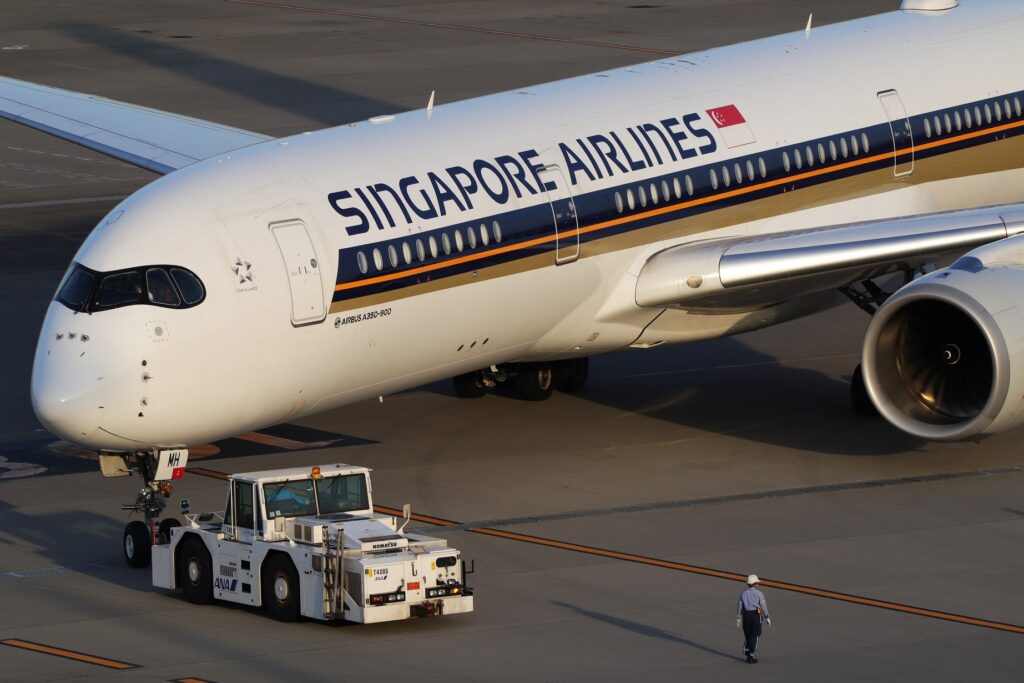Singapore Airlines recorded its highest-ever quarterly operating profit, nine-month operating, and net profit.
The airline group earned $4.8 billion of revenue in Q3 FY2022/23, which ends on December 31, 2022, and $13.2 billion for the nine months of FY22/23. The total net profit was $628 million and $1.5 billion, respectively, as the airline indicated it had record-breaking load factors due to robust demand across the Singapore Airlines Group (SIA Group) network.
The group consists of Singapore Airlines and Scoot, a low-cost carrier also based in Singapore Changi Airport (SIN), as well as the cargo airline Singapore Airlines Cargo. Additionally, SIA Group has a 49% stake in India-based Vistara and operates the flight school Singapore Flying College.
As of December 31, 2022, the group had 133 passenger and seven cargo aircraft. It plans to add one Airbus A350-900 and one Boeing 787-10 in Q4 FY22/23. Furthermore, during the third quarter of the fiscal year, Scoot announced that it would lease nine Embraer E190-E2s from the lessor Azorra, with the regional jets scheduled to arrive between 2024 and 2025.
Responding to travel demand
As travel restrictions continued to ease across Asia, in particular East Asia, and the end-year holiday season approached, the group added more destinations to its network. Going forward, it expects demand to remain robust.
Singapore Airlines pointed out that easing restrictions resulted in more destinations being added in China and Indonesia and also increased frequencies to Hong Kong, Seoul, South Korea, Taipei, Taiwan, and Japan. By the end of 2022, the group served 111 destinations across 36 countries, while the cargo airline flew to 116 destinations in 38 countries.
The company highlighted China as a “key market”, where it continues to add more flights. At the end of Q3 FY22/23, it flew to 14 cities in China, compared to 25 destinations prior to the pandemic (January 2020). In total, Singapore Airlines and Scoot will offer capacity equal to 77% of pre-pandemic levels in the last quarter of the fiscal year throughout its network.
“Forward sales remain strong across all markets for both leisure and business travel, as well as all cabin classes. The Group will continue to monitor the demand for air travel, and adjust its capacity accordingly,” read the airline’s Q3 FY22/23 report. However, “air freight is expected to face headwinds, in addition to the seasonally weaker fourth quarter,” according to the carrier. Furthermore, geopolitical challenges continue to challenge the aviation industry with “slowing economic growth, high cost inflation, and elevated fuel prices”.
“The SIA Group’s robust financial position, its commitment to offer customers best-in-class products and services, as well as its enhanced agility and resilience emerging from the Covid-19 pandemic, will allow it to retain its leadership position in the industry,” concluded Singapore Airlines’ outlook.
In December 2022, Singapore Airlines and Thailand’s Thai Airways signed a Memorandum of Understanding (MoU) to form a strategic partnership.
But the major development has been Singapore Airlines and Air India’s announcement that Vistara, jointly owned by Singapore Airlines (49%) and Tata Sons (51%) would be merged into Air India. Tata Sons acquired Air India in January 2022 from the Indian government. Following the merger, Singapore Airlines would invest $360 million in the Indian airline, receiving a 25.1% stake in Air India.
While the merger is still subject to regulatory approval, the Singaporean carrier stated that it would “bolster SIA’s presence in India, strengthen its multi-hub strategy, and allow it to continue participating directly in this large and fast-growing aviation market”.

